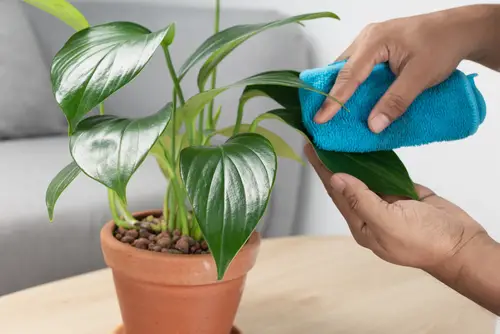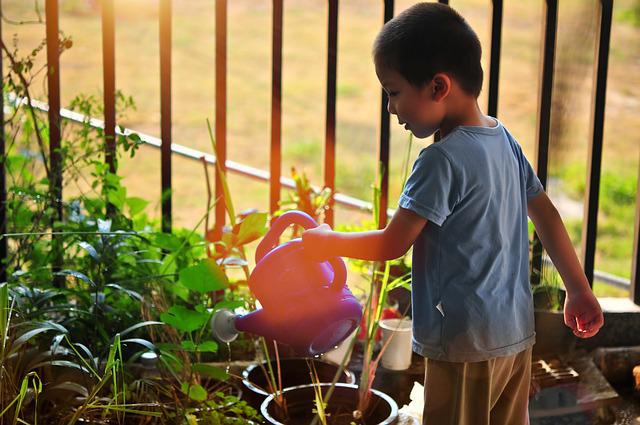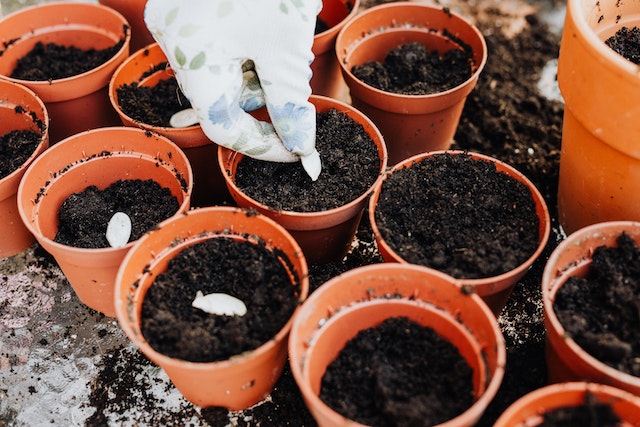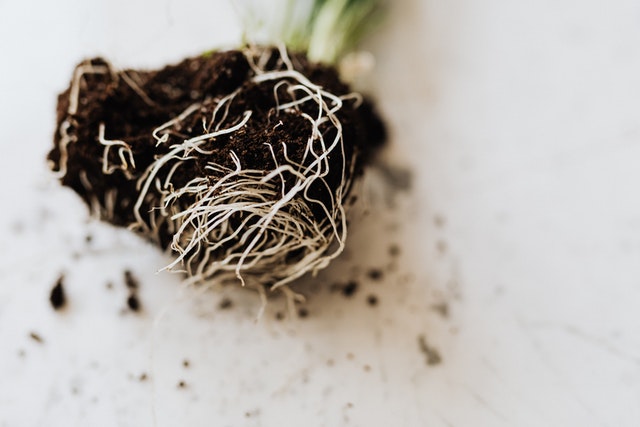The Dragon Tail plant can make the perfect next choice if you want to increase your indoor plant collection. It has interesting leaves that look glossy and elliptical when young but become lobed and resemble a dragon tail when they mature, hence the plant’s name.
Interesting to note, the Dragon Tail plant prefers indirect light and slightly cooler temperatures, making it an ideal choice for many indoor spaces.
Here we take a look at all the information that you need to care for this beautiful plant with its key features, basic care and common problems you may face. Let’s get started!
Origin and Classification
The Dragon Tail plant’s primary origin is South-East Asia, Australia, and near the Pacific islands. The climate in those places is conducive for this plant’s growth, and the residents grow it in the house or offices. The Dragon Tail plant is a climbing plant belonging to the Araceae botanical family and Epipremnum pinnatum species.
Features of Dragon Tail plant

Among the things that will help you decide whether to buy the Dragon Tail plant is its features. One thing you will love about this plant is the thick fleshy stems. The plant wraps itself around the pot’s surface or upwards on a wall spreading its leaves to different areas.
The dragon plant also grows well in tropical and subtropical climates because of the warmth and humidity indoors. If you want the plant to thrive well, place it in well-lit spaces, but avoid exposing it to direct sunlight.
Although it can still grow in darker rooms, you won’t get the green leaves you want to decorate your place. The stem grows upwards and leafless, making it less attractive.
Another surprising feature of the dragon plant is its ability to absorb poisonous substances from the air. It absorbs nicotine from the air and stores it in the leaves.
Besides, the Dragon plant filters formaldehyde, the strong-smelling gas in varnishes and paint coatings, making the plant an air freshener. However, you will need many dragon plants to get proper air filtration in the room.
Flowers and Leaves

The indoor Dragon Tail plant does not flower, but the one in the tropical produces green-white cylindrical flowers. It has leathery leaves that grow in an alternating pattern on the stalks, but this changes with age.
Besides, the leaves have a striped design in white or yellow, depending on the plant’s species, and are green but contain toxic calcium oxalate, which causes skin irritation.
Tolerance and Resistance
The Dragon Tail plant grows in tropical climates and can tolerate high temperatures, but you must protect it from sunlight. However, it does not do well in low temperatures of below 10 degrees Celsius. The plant’s resistance to diseases and pests, mealybugs, scales, and spider mites that feed on it increases its lifespan.
Height and Growth
If you want your Dragon Tail plant to grow upright, it can grow to a maximum of 1 meter. However, if you plant it in a basket or pot, it grows around the pot and can grow up to 3 feet long. The plant’s growth rate is fast and can attain its maximum height in a short time. However, it grows faster in warmer climates.
Maintenance and Durability
Homeowners choose the indoor dragon plant because of the minimal maintenance. It does not require frequent watering because it can survive a drought. Also, since the plant is not very leafy, you don’t need to prune. It is also durable and can live in the home for many years if provided with the growth requirements.
Basic Care Of Dragon Tail plant

Dragon Tail plant is easy to maintain because it requires less attention. It stores most water in the leaves and stem, making it drought resistant. For the plant to grow well, expose it to light for about 4-6 hours and ensure that the sun does not directly hit it.
Acidic soil with a PH of 5.1-5.5 is the most suitable for the Dragon plant. Also, although the dragon plant requires some light and warmth, ensure that the temperatures are between 18 degrees Celsius and 25 degrees Celsius.
If you don’t want your Dragon Tail plant to grow tall, plant it in a round pot. It thickens around the pot. However, some homeowners wish the dragon plant to grow against the wall. These and more maintenance tips are explained later in the article.
Light and Watering
Indirect sunlight is essential for the growth of the Dragon Tail plant, so place it near the window to get at least 4 to 6 hours of light. If your plant is losing its marks and the foliage is turning entirely green, it is a sign of inadequate lighting.
Before watering, always check if there is enough wetness in the pot by first pressing the topsoil with your index finger in order to avoid over irrigation.
Soil and Repotting

The regular garden soil is a suitable choice, but ensure a PH 6.5-5.5. Unlike some indoor plants that require yearly repotting, the dragon plant does not. If it outgrows the pole, replace it with a longer one.
Also, the Dragon Tail plant does well in well-drained organic soil. Ensure there is good aeration and the pot has several pores for water drainage.
Temperature and Humidity
The standard temperature requirements for the dragon plant are 180C to 250C, but these temperature requirements are not necessary for indoor dragon plants. Also, the plant grows perfectly in humidity levels of 50%-60%. If you notice crisp and brown edges on the plant, it indicates a lack of moisture.
Fertilizing, Pruning, And Propagation
Luckily, the dragon plant does not need to be fertilized constantly. Adding liquid fertilizer to its soil for two to three weeks during the early stages is enough. If you want the plant to grow freely and look healthy, consider pruning. The propagation of the plant is simple. Read the propagation steps first.
Common Problems Caring for Dragon Tail plant
Besides the advantages you get from the dragon plant, homeowners face some problems when caring for it. For example, insects are notorious and a common problem. They feed on the leaves, and since the dragon plant stores water in the leaves, it can cause the death of the plant.
Also, pruning the plant using contaminated knives can lead to infections and death of the plant. The Dragon Tail plant has poisonous leaves that irritate humans. Besides, the leaves also affect pets and small kids, so always ensure they stay away. The other common problems are:
Pests
Mealybugs and fungus gnats are common pests that attack indoor plants. They primarily feed on the leaf axils and underside and can lead to the death of the plant. Luckily, treatments like eco-neem kill the tiny pests and will lengthen your plant’s lifespan.
Root Rot

The Dragon Tail plant does not require a lot of watering because too much water can cause rotting in the roots. Also, growing the plant in a pot without enough pores for drainage leads to root rot. When the roots rot, the plant begins to die slowly. Only water your dragon plant if the soil is dry, and get a perforated pot.
Burnt Spots on the Leaves
If you place your plant next to the window and let it be hit directly by sun rays, you will notice burnt brown leaves. The dragon tail’s plant leaves are delicate to sunlight. However, you can prevent sunburns by putting your plant in a safe place away from sunlight.
Dropping Leaves
The beauty of the Dragon Tail plant is the many green succulent leaves around the pot or growing on the wall. However, overwatering it and cold air could cause leaf fall on your plant, and others will have dying leaf tips making the plant less appealing. Avoid watering the plant and ensure it is in a warmer corner.
More on plant types: Philodendron Ring of Fire
Final Thoughts on Dragon Tail plant
The Dragon Tail plant is a climbing plant originating from South Asia. The plant is characterized by many green leaves, and it mainly grows in tropical regions. Caring for and maintaining the Dragon Tail plant is easy, but you may experience other problems like pests and sunlight damage on the leaves.
Frequently Asked Questions
How Do You Take Care Of A Dragon Plant?
To keep your Dragon Tail plant for long, water it moderately. The plant stores most of the water in the leaves and stem so it does not dry up fast. You should also grow it in acidic soil of PH 5.1-5.5 and temperatures ranging between 180C and 250C.
Also, growing your Dragon Tail plant under direct sunlight will damage the leaves, so keep it away from sunlight. If insects attack your leaves, use Eco-neem to kill them. Insects feeding on the plant can cause its death.
Is A Dragon Tail Plant Rare?
The Dragon Tail plant is a rare flowering plant growing in tropical areas. It is in the family Araceae and can grow tall on walls or round on pots. Besides, there are varieties of the Dragon plant, but the most common one has apple-green leaves with beige variegation.
The other type of dragon plant is called the Mable queen, and it has light green leaves with white variegation.
How Big Does a Dragon Tail Plant Grow?
The Dragon Tail plant grows fast if exposed to favorable conditions and can reach its maximum height of 32 feet within a short time. The size makes the plant a perfect choice if you want a hanging basket plant or grow it straight indoors.
However, other homeowners do not fancy the height, so they grow the plant in a pot and let it leaf around. Since dragon plants produce many thick leaves, the plant in the pot looks bushy and beautiful. Always ensure you water it once it dries up and use pesticides to keep the leaves healthy.
Is Dragon Tail Plant Poisonous?
Yes. Dragon tail plants contain saponins that can harm pets and humans. If ingested, one can drool, vomit, be weak, and cats can have dilated pupils.

Hey, I’m Lisa and I’ve been an avid gardener for over 30 years. I love writing, talking and living in the garden! Feel free to connect with me on my socials below

![Dragon Tail Plant, Grow & Care Guide [year]](https://gardeningfaqs.com/wp-content/uploads/2022/05/shutterstock_1859765506.jpg)